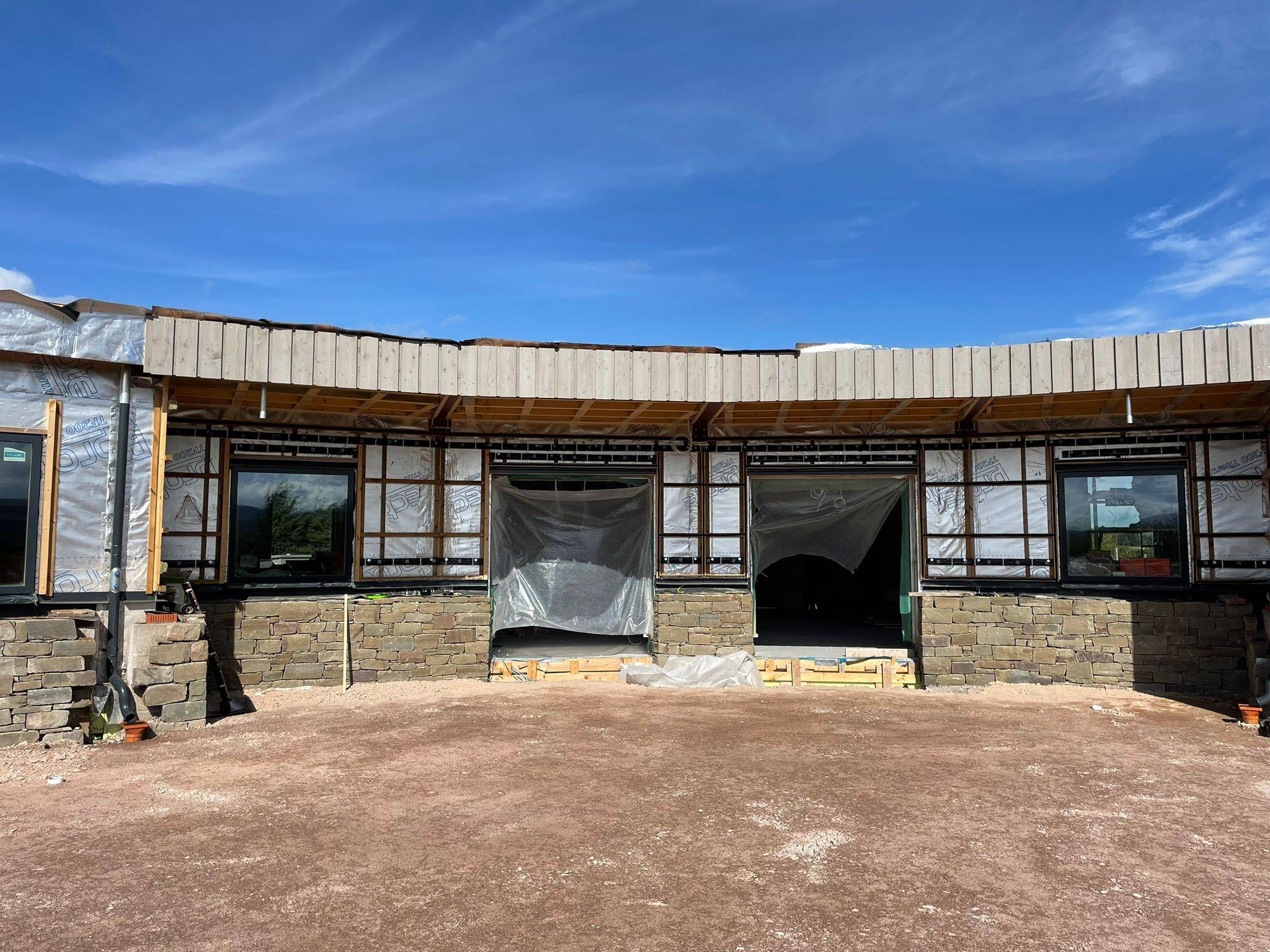Scotland's Wildlife Discovery Centre well underway at Highland Wildlife Park
Posted 6 Nov 2023 in Highland Wildlife Park

Recent visitors to Highland Wildlife Park will have noticed we are in the midst of an exciting building project on-site. Scotland’s Wildlife Discovery Centre will connect more people with wildlife and inspire action to protect nature at a time when the world faces a biodiversity crisis.
The three new buildings, Learning Hub, Discovery Hub and Conservation Hub, will open next year and we are particularly proud of the sustainability of these works. At the Royal Zoological Society of Scotland (RZSS) we are keenly aware of the climate crisis and the impact it has on life around the world. As climate change threatens our biodiversity and more and more species with extinction, our 2030 strategy pledges to reverse the decline of 50 species by the end of the decade.
One of the ways our new hubs will be as environmentally friendly as possible is by using lambswool insulation. Sheep need to be sheared annually for their own health and wellbeing and their wool is an effective insulator. Using their wool will reduce our plastic usage and allow us to use less energy overall. When it comes time to replace, the insulation can even be composted.
To heat the new buildings, air source heat pumps will take heat from the outside air to warm up water that will be used in underfloor heating - essentially a very fancy, eco-friendly kind of radiator! Thanks to some clever engineering, air source heat pumps can still take warmth from the air even when its below freezing at the park.
With underfloor heating and a green sedum roof, our Learning Hub will be sustainable from the floor to ceiling. Rainwater will help to grow Highland native flowers that will support on-site biodiversity and encourage bees, butterflies and other important Scottish species.
The outside of the hubs will also contribute to our net-zero ambitions. We are using sustainably sourced larch from well managed forests to clad the buildings, with all wood coming from within 100 miles of the park. Locally quarried substrate will also allow us to reduce our emissions.
When the foundations of the buildings were laid, we had to remove stones from the area. These will eventually be broken down and used for landscaping across the park, eliminating the need to transport the stones off-site for disposal.
With all the walls and roofs now up there is a real sense of how the new spaces will look when they’re complete.
Being able to use our expertise to utilise cutting-edge, sustainable building practices is amazing and we can’t wait for visitors and local communities to join us and enjoy these new eco-friendly buildings.
Steve Plowman Property & Estates and Projects Manager, Highland Wildlife Park

